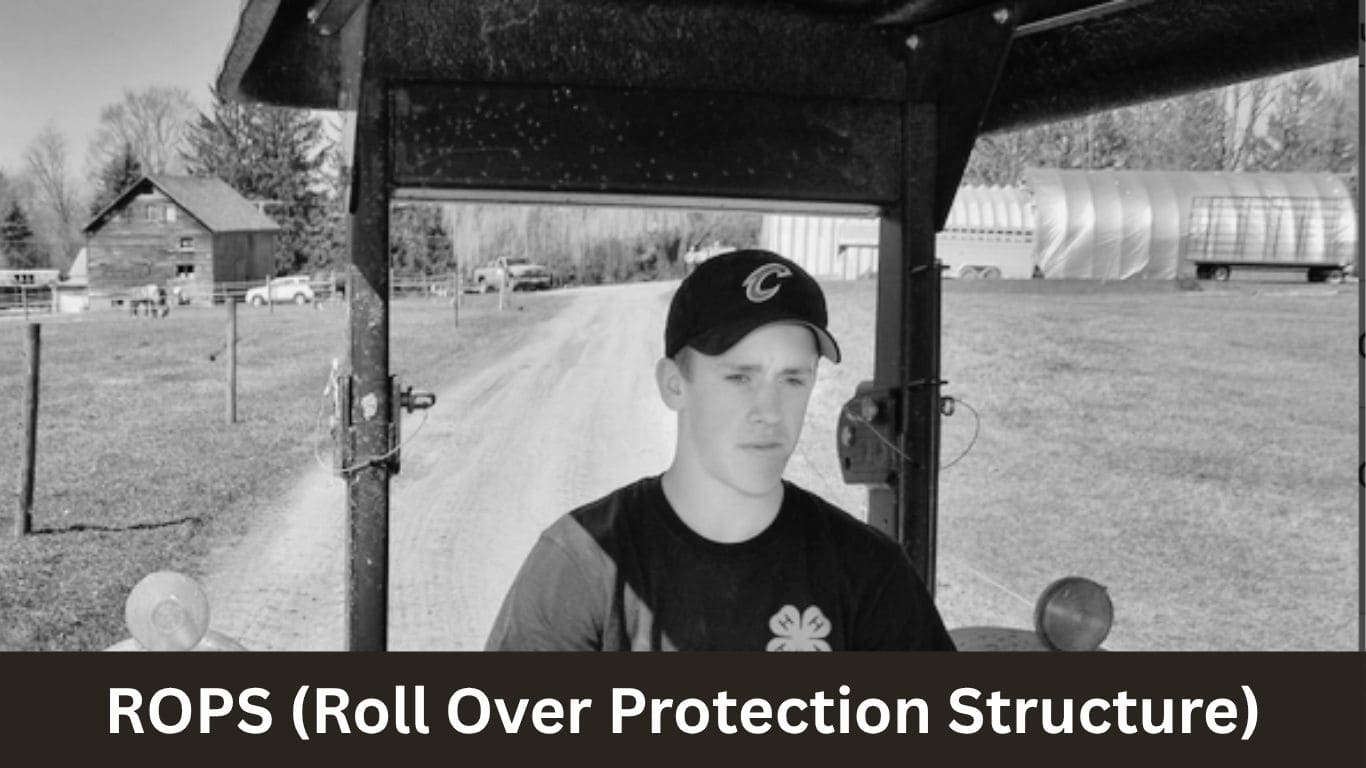Roll-Over Protective Structures or (ROPS) are important sturdy frameworks designed to be fitted to tractors and other heavy machinery. Their primary role is to keep the operator safe in the event of a machine tipping over, creating a protected “survival space” that helps prevent life-threatening injuries. It works best when the operator also wears a seatbelt.
Table of Contents
Why is ROPS important?
Day-to-day operations often take place on uneven ground or slopes, which increases the risk of equipment rollovers. Without a Roll-Over Protective Structure in place, these incidents are far more likely to end in tragedy. When both ROPS and seatbelts are used, the chances of surviving a rollover event improve dramatically. Studies estimate a risk reduction of over 70%.
What are the Main Types of ROPS?
This table shows the details:
| Type | Description | Best For |
| Two-Post Roll-Over Protective Structure | Basic design, affordable, effective | Small tractors, compact machinery |
| Four-Post Roll-Over Protective Structure | Stronger structure, encloses more area | Larger tractors, higher-risk jobs |
| Enclosed Cab Roll-Over Protective Structure | Integrated with the cab, shields from weather/noise | Big machines in tough environments |
How Does ROPS Work During a Rollover?
If a machine overturns, the Roll-Over Protective Structure frame takes the brunt of the impact and holds its shape. When the seatbelt is used correctly, the operator is safely contained in the protected zone, avoiding the risk of being crushed or thrown out.
Read more: 3-Point Linkages Systems.
Key Advantages of ROPS
- Saves lives in rollover situations
- Required by law in many regions for certain equipment
- Can reduce insurance expenses
- Increases operator trust and morale
- Maintains or raises machine resale value
ROPS and FOPS: Know the Distinction
- Roll-Over Protective Structures are built to protect against overturns.
- FOPS (Falling Object Protective Structures) are designed to guard against hazards from above.
- In high-risk environments, having both systems in place means even more comprehensive safety.
Typical ROPS Price
Final prices may vary based on model, brand, types and additional features.
| Type | Price Range in India | Price Range Globally |
| Two-Post Structure | ₹15,000–₹25,000 | $200–$350 |
| Four-Post Structure | ₹30,000–₹45,000 | $400–$600 |
| Enclosed Cab Structure | ₹70,000–₹1,20,000 | $900–$1,500 |
Maintenance required for Keeping it Effective
- Check for any corrosion, cracks, or bent parts periodically.
- Make sure all fasteners and welds are secure.
- Avoid drilling, welding, or changing the frame.
- Replace the structure after any accident or rollover.
- Retrofitting Roll-Over Protective Structures to Older Machines
Most older tractors and equipment can be safely upgraded with this unit using approved kits. For best results and to ensure safety standards, have the installation performed by a professional.
Real Insights from Operators
“I didn’t think rollovers were a real risk on my land. But after slipping into a ditch one day, the ROPS and my seatbelt meant I avoided serious harm. It’s an investment I’m grateful for.”
Rajiv Patil, Farmer from Maharashtra:
“After adding four-post Roll-Over Protective Structures to all our machinery, our crew feels much more secure, and our insurance rates have dropped. Safety has become a real priority for everyone, not just a box to check.”
Samantha Lewis, Construction Supervisor in Texas:
Frequently Asked Questions
Q: Is it mandatory to install this unit?
A: In many countries, laws require ROPS on tractors and equipment above certain specifications. Always check your local regulations.
Q: Can Roll-Over Protective Structures prevent all rollover injuries?
A: No safety device can guarantee total protection, but the combination of Roll-Over Protective Structures and a seatbelt offers the highest level currently possible.
Q: Is it okay to install Roll-Over Protective Structures on my own?
A: It’s best to have a certified technician handle the installation to ensure the system will perform as intended.
Q: Does Roll-Over Protective Structures make equipment less stable?
A: Not noticeably—ROPS units are engineered to be strong but not overly heavy.
Q: How long will this unit last?
A: With regular care and if not involved in a severe accident, It can protect for the entire service life of the vehicle. Always replace them if they are damaged.
The Bottom Line: Safety isn’t Optional
Rollover incidents can happen unexpectedly and have severe consequences. Fitting your equipment with Roll-Over Protective Structures, wearing a seatbelt, and following maintenance guidelines are proven ways to keep operators safe. Don’t leave it to chance—equip, buckle in, and work securely.
To buy or to enquire about this unit, please visit here
